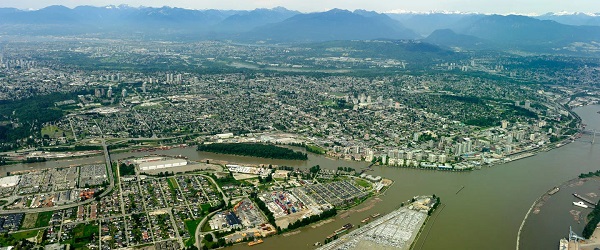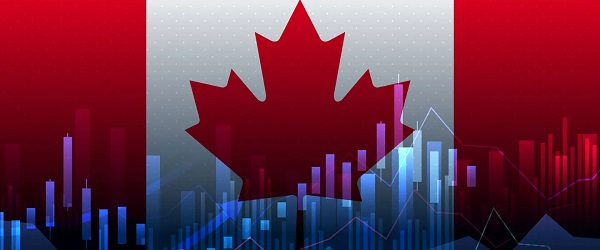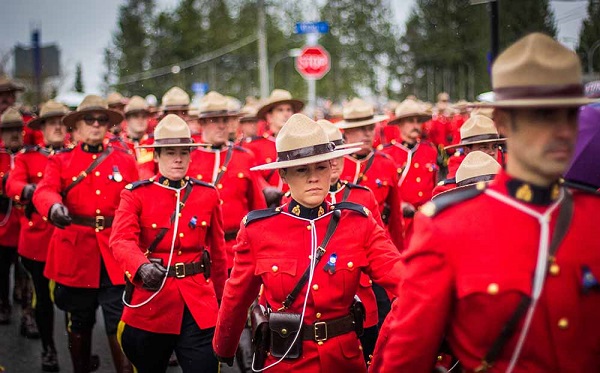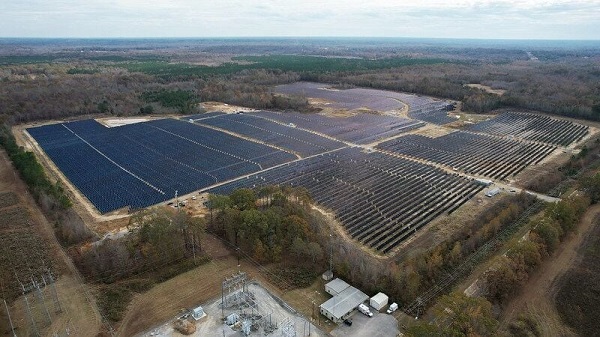Business
All of B.C. now subject to ‘Aboriginal title’ claims

From the Fraser Institute
What is the status of Aboriginal title in British Columbia as a result of the Richmond decision by Justice Young of the B.C. Supreme Court and what specifically did Justice Young decide?
The judge declared that three square miles in the heart of Richmond is now Aboriginal title. Critically, the Cowichan did not sue the fee simple title owners (both businesses and residences). Therefore, she did not make a specific order declaring those titles were invalid. However, she declared Aboriginal title was superior to fee simple titles.
The basis for finding Aboriginal title was her determination that, as of 1846 (when the British Crown entered into the Oregon Treaty with the United States, and thereby declared sovereignty over what became B.C.), a band of a little over 1,000 Aboriginal peoples, now known as the Cowichan, used the area each summer for fishing. It was not their permanent home. They lived on Vancouver Island. They occupied the Richmond lands for only a few months each summer. But the judge determined that that was sufficient to meet the test of “exclusive occupation” required to establish Aboriginal title. This is the test laid down by the Supreme Court of Canada.
The Colony of B.C. started issuing fee simple titles in the Richmond area in the 1860s. The Cowichan that had fished during the summer had left the area by about 1870. There has been no connection between them and the area since then. But various courts have ruled there is no need for “continuous occupation.” So long as the judge can find on the evidence that the band had exclusive occupation in 1846, Aboriginal title can be declared. That is what the judge did.
Extraordinary rules of evidence for Aboriginal title claims
In finding the specific areas which had been “exclusively occupied” in 1846, the judge relied on Cowichan witnesses who gave seventh generation hearsay evidence from their distant ancestors. First-hand hearsay evidence has been inadmissible throughout the history of the common law but in claims by Indigenous people to prove Aboriginal title, the Supreme Court of Canada decreed that seventh generation hearsay is admissible. The Supreme Court of Canada justified this extraordinary exception to the normal exclusion of hearsay evidence on the grounds there was no other way Aboriginal peoples could prove their cases.
Justice Young went on at length as to how reliable this evidence was (notwithstanding that first-hand evidence is inadmissible from everyone else because it is deemed unreliable). For example, at paragraph 95 of her decision, she describes how the band engaged in berry picking, which presented the opportunity for parents to teach their children the history of their occupation of the land. This, she found, ensured that an Aboriginal person today could be relied on to accurately tell the court what portions of land were occupied in 1846.
How does Aboriginal title affect fee simple title?
While some commentators have belittled the significance of the Richmond decision, they are dead wrong. Let there be no mistake. Aboriginal title now trumps fee simple title.
The fact that this judge did not declare the fee simple titles invalid and issue an order for the residents and business owners to vacate, leaving their properties of great value to the Cowichan, is only because they (i.e. the Cowichan) had elected not to sue the fee simple owners. So, no order could be made against the fee simple property owners. But the court’s declaration is that their titles are subject to overriding Aboriginal title.
She ordered the B.C. government to enter into negotiations with the Cowichan Nation on how to sort out the problem of what should be done in the face of the conflict between fee simple title and Aboriginal title. She expressed the hope and optimism that everything could be resolved in the spirit of “Reconciliation.”
The problem with such an approach is that the Cowichan Nation has almost all the leverage in the “negotiations,” which normally doesn’t make for a reasonable or balanced outcome. For instance, they now own the land and could now sue the current fee simple owners for an order cancelling their titles and vacating their properties and, on the basis of the Cowichan decision in Richmond, they would succeed.
Or the provincial government might use tax dollars to buy back the fee simple titles from the Cowichan.
No one knows what will happen.
Whither British Columbia?
In his recent piece in the Vancouver Sun, eminent legal scholar Thomas Isaac talks wishfully about how this can all be resolved. He talks about “fair compensation” to the Cowichan in lieu of kicking out the fee simple owners. But he quotes from Supreme Court of Canada authority that “fair compensation may need to exceed the price of fee simple land.” In other words, the Cowichan may take compensation instead of the fee simple titles, but the amount paid may be worth more than the value of the titles today.
A resolution to this incredibly ambiguous situation with the fee simple owners will happen only if, on appeal, the Supreme Court of Canada undoes its previous damaging rulings through their creation of Aboriginal title.
As a long-time participant in the legal process, I’m skeptical.
In the meantime, what do the owners of the fee simple titles in Richmond do? No one would reasonably buy their properties for anything close to fair value given the ambiguity over ownership and uncertainty over how this might be resolved. Further, no lender would grant a mortgage based on the value of those properties today.
I wish I could be more optimistic. But I see no basis whatsoever to be optimistic where our entire province is subject to Aboriginal title claims from the roughly 2 per cent of the province’s population that are registered under the Indian Act and therefore members of bands that can claim Aboriginal title.
Business
New PBO report highlights the cost of ballooning bureaucracy

Without a thorough review, federal personnel spending could cost taxpayers upwards of $76 billion per year by the end of the decade, highlights the MEI in reaction to the latest report from the Parliamentary Budget Office (PBO).
“Federal priorities are determined by federal spending, and it is clear that Ottawa’s priority has been expanding the size and scope of government,” says Gabriel Giguère, senior policy analyst at the MEI. “If Prime Minister Carney is serious about returning to sound public finances, personnel spending will need to shrink, and fast.”
Total personnel spending is projected to reach $76.2 billion by 2029-2030, if nothing changes, according to the new PBO publication released this morning. This is up from $65.3 billion in 2023-24, a 16.7 per cent increase.
Average compensation is expected to reach $172,000 per full-time employee by 2029-2030.
When Prime Minister Carney’s predecessor, Justin Trudeau, came to power in 2015, personnel spending was $39.6 billion—a bit more than half of what it is today. Over the course of his tenure, the federal bureaucracy grew by over 100,000 employees.
Certain departments have grown substantially since 2015, including:
- Employment and Social Development Canada: +15,497
- Canada Revenue Agency: +17,257
- Public Services and Procurement Canada: +6,362
“New spending, programs, and taxes have gone hand in hand with the expansion of the federal workforce,” says Giguère. “If Ottawa is serious about cutting wasteful programs, it should begin by cutting the bureaucracies responsible for them.”
The C.D. Howe Institute recently projected that Prime Minister Carney’s first budget could feature a $92-billion deficit for 2025–2026.
Carney’s government has pledged to reduce spending by 15 per cent in select areas by the 2028–2029 fiscal year, following reductions of 7.5 per cent and 10 per cent in the two previous years, by shrinking departments and cutting waste.
In its prebudget submission, the MEI recommended that the federal government be more ambitious in carrying out this pledge. It called on Ottawa to reduce the federal bureaucracy by 17.4 per cent, mirroring the Chrétien reductions of the 1990s, which would eliminate 64,000 positions and save $10 billion a year.
Rolling back Employment and Social Development Canada, the Canada Revenue Agency, and Public Services and Procurement Canada to their 2015 levels could cut more than 39,000 full-time equivalent positions, halfway to that 64,000 goal.
“The fact that personnel has gone up with no measurable improvement in services is an indictment of the current system,” says Giguère. “Restoring balance means ensuring Canadians receive fair value for their taxes, and for that to happen, Ottawa needs to stop seeing the bureaucracy as a job creation scheme.”
* * *
The MEI is an independent public policy think tank with offices in Montreal, Ottawa, and Calgary. Through its publications, media appearances, and advisory services to policymakers, the MEI stimulates public policy debate and reforms based on sound economics and entrepreneurship.
Business
Carney’s tariff blunder cost you at the checkout

This article supplied by Troy Media.
And rolling them back is his way of admitting it
Prime Minister Mark Carney’s decision to roll back most counter-tariffs on Sept. 1 is more than welcome relief at the checkout. It’s an admission the tariffs never should have been imposed in the first place, and that consumers unfairly paid the price.
The rollback means lower grocery bills, greater choice for grocers and—most importantly—a brake on food inflation. The tariffs acted like the tide lifting all boats: when the price of orange juice, peanut butter or coffee jumped, it indirectly pushed prices elsewhere upward as grocers rebalanced their pricing.
As we enter the critical fall season, when demand for everyday staples like bread and dairy and prepared foods such as canned goods and ready-to-eat meals typically rises, removing artificial cost pressures will help keep food inflation in check.
But this move isn’t just about food prices. More to the point, it quietly acknowledges what many suspected: counter-tariffs were being applied to goods
that were technically exempt under the Canada–United States–Mexico Agreement (CUSMA), the trade deal that replaced NAFTA. That made them not only harmful to consumers but a likely violation of Canada’s own obligations under the agreement. Few Canadians were aware of it, but they certainly felt it in their wallets. The rollback is not just an economic fix—it is a political and legal admission of error.
Carney did the right thing, and on balance, it was a good day for Canada. His decision reflects an understanding that the countertariffs were never about a direct trade war between Canada and the U.S. Instead, they were a response to a broader geopolitical shift an America First agenda from Washington aimed at reinforcing U.S. leverage globally, not targeting Canada specifically. By resetting the relationship with Washington, Carney is
prioritizing the bigger picture: CUSMA and broader North American integration. The rollback is a gesture of goodwill that acknowledges that reality.
That goodwill matters because Carney’s move also reflects a simple truth: we need to get along with the U.S. More than 70 per cent of our trade flows through the U.S. market. For food, the dependency is even deeper, with supply chains tightly interwoven across the border. Stability in this relationship directly influences the prices Canadians pay for groceries.
That’s what makes the current strain so dangerous. Canada is already facing one of its worst trade crises in a generation. The recent U.S. tariff hikes on Canadian agri-food products aren’t just policy wrinkles—they’re a gut punch. In that context, the rollback isn’t just symbolic—it’s urgent. It offers a timely response to mounting pressures on both farmers and consumers. If Ottawa fails to go further, Canadians will continue to pay the price.
Rolling back counter-tariffs is only a first step. Ottawa still has unfinished business. The costs of moving food across provinces remain unnecessarily high, with different rules on food and alcohol creating internal trade barriers that drive up prices. Removing these would improve efficiency and lower costs for consumers. Canada must also address escalating tensions with other key partners. China is a critical buyer of Canadian canola and pork; India is central to our pulse exports. Both relationships are strained and the food economy is feeling the consequences. A comprehensive strategy that recognizes both geography and geopolitics is needed.
For now, though, eliminating counter-tariffs sends the right signal: Canada is ready to reduce friction, strengthen North American cooperation and give consumers some long-overdue relief at the checkout.
Dr. Sylvain Charlebois is a Canadian professor and researcher in food distribution and policy. He is senior director of the Agri-Food Analytics Lab at Dalhousie University and co-host of The Food Professor Podcast. He is frequently cited in the media for his insights on food prices, agricultural trends, and the global food supply chain.
Troy Media empowers Canadian community news outlets by providing independent, insightful analysis and commentary. Our mission is to support local media in helping Canadians stay informed and engaged by delivering reliable content that strengthens community connections and deepens understanding across the country.
-

 Alberta2 days ago
Alberta2 days agoMaster agreement approved for event park and Village at ICE District
-

 Business1 day ago
Business1 day agoU.S. rejection of climate-alarmed worldview has massive implications for Canada
-

 Crime1 day ago
Crime1 day ago8-year-old and 10-year-old killed in church pews, 17 others injured in shooting at Minneapolis Catholic church
-

 Artificial Intelligence2 days ago
Artificial Intelligence2 days agoParents sue OpenAI, claim ChatGPT acted as teen’s “suicide coach”
-

 Business2 days ago
Business2 days agoTrump goes on attack over digital services taxes, threatens tariffs
-

 Business1 day ago
Business1 day agoMounties, Overstretched and Overmatched by Foreign Mafias, No Longer Fit for Service
-

 C2C Journal1 day ago
C2C Journal1 day agoHow Canada Lost its Way on Freedom of Speech
-

 Daily Caller1 day ago
Daily Caller1 day agoTrump Team Floated Energy Incentives With Russia In ‘Sideline’ Ukraine Peace Talks








